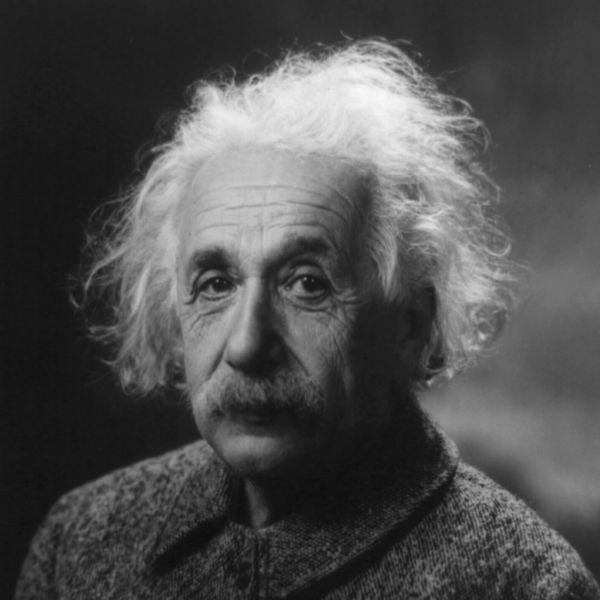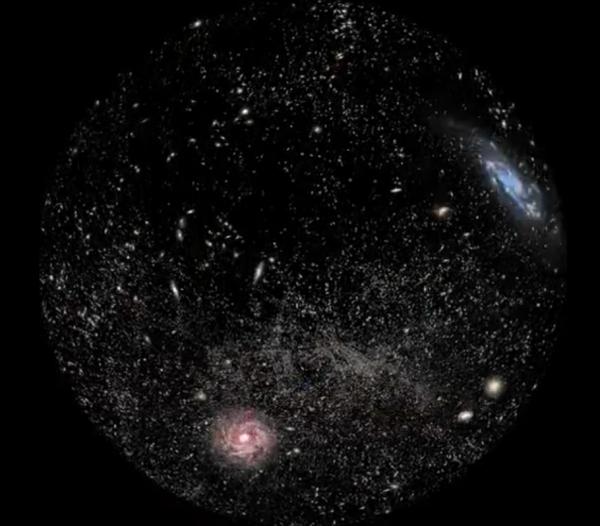What is dark matter? Is there a dark matter?
The question of the origin of the universe, its past andthe future has worried people from time immemorial. For many centuries, theories have arisen and refuted, offering a picture of the world, based on known data. A fundamental shock to the scientific world was the theory of relativity of Einstein. She also made a huge contribution to understanding the processes that form the universe. However, the theory of relativity could not claim the title of truth in the last instance, which does not require any additions. Improved technologies allowed astronomers to make unthinkable earlier discoveries, which required a new theoretical basis or a significant expansion of already existing provisions. One of these phenomena was dark matter. But first things first.
Cases of bygone days

To understand the term "dark matter", let's return tothe beginning of the last century. At that time, the notion of the universe as a stationary structure dominated. Meanwhile, the general theory of relativity (GRT) assumed that sooner or later the force of attraction will lead to the "clumping" of all objects of space into a single tangle, the so-called gravitational collapse will occur. There are no repulsion forces between cosmic objects. Mutual attraction is compensated by centrifugal forces, creating a constant movement of stars, planets and other bodies. Thus, the system is balanced.
In order to prevent a theoreticalcollapse of the Universe, Einstein introduced a cosmological constant - a quantity that brings the system to the required stationary state, but is actually fictitious, with no obvious grounds.
Expanding Universe
The calculations and discoveries of Friedman and Hubble showedthere is no need to violate the regular equations of general relativity by means of a new constant. It has been proved, and today this fact practically does not cause doubts at anyone that the Universe expands, it had once begun, and it can not go on with the stationarity of speech. Further development of cosmology led to the emergence of the theory of a big bang. The main confirmation of new assumptions is the observed increase with time of the distance between galaxies. It is the measurement of the speed of removal of neighboring space systems from each other and led to the formation of a hypothesis that there is dark matter and dark energy.
Data not consistent with theory
Fritz Zwicky in 1931, and then Jan Oort in1932 and in the 1960s were engaged in counting the mass of matter of galaxies in the remote cluster and its ratio with the speed of their removal from each other. From time to time scientists came to the same conclusions: this amount of matter is not enough that the gravity created by it could keep together galaxies moving at such high speeds. Zwicky and Oort suggested that there is a hidden mass, the dark matter of the universe, which does not allow cosmic objects to scatter in different directions.
However, the hypothesis received recognition of the scientific world only in the seventies, after the announcement of the results of the work of Vera Rubin.

Properties and composition
This kind of matter is called dark because itscan not be seen by any existing means. Its presence is recognized by an indirect sign: dark matter creates a gravitational field, without emanating completely electromagnetic waves.

The most important task for scientistsgetting an answer to the question of what this matter consists of. Astrophysicists tried to "fill" it with the usual baryonic substance (baryonic matter consists of more or less studied protons, neutrons and electrons). In the dark halo of galaxies included compact lightly emitting stars such as brown dwarfs and huge, mass approximate to Jupiter planet. However, such assumptions could not stand the test. Baryonic matter, habitual and known, thus, can not play a significant role in the hidden mass of galaxies.
Today, the search for unknown componentsengaged in physics. Practical researches of scientists are based on the theory of supersymmetry of the microworld, according to which for each known particle there is a supersymmetric pair. Here they are and make up dark matter. However, there has been no evidence of the existence of such particles, perhaps this is the matter for the near future.
Dark energy
The discovery of a new type of matter did not endSurprises, which prepared the universe for scientists. In 1998, astrophysicists presented another chance to compare these theories with facts. This year was marked by the explosion of a supernova in a galaxy far from us.

As is known, to accelerate the movement of the body, heyou need to transfer energy. The force that forces the universe to expand faster became known as dark energy. This is no less mysterious part of space than dark matter. It is known only that it is characterized by a uniform distribution throughout the universe, and its effect can be recorded only at enormous cosmic distances.
Again, the cosmological constant
Dark energy shook the big bang theory. Part of the scientific world is skeptical about the possibility of such a substance and the acceleration of expansion that it caused. Some astrophysicists are trying to revive the forgotten cosmological constant of Einstein, which again from the category of a large scientific error can turn into a number of working hypotheses. Its presence in the equations creates antigravity, which leads to an acceleration of the expansion. However, some consequences of the presence of the cosmological constant do not agree with the observational data.

Today, dark matter and dark energy,which make up the bulk of the matter in the universe, are riddles for scientists. There is no unequivocal answer to the question about their nature. Moreover, perhaps this is not the last secret that keeps us from outer space. Dark matter and energy can become a gateway to new discoveries that can turn our thinking about the structure of the universe.







